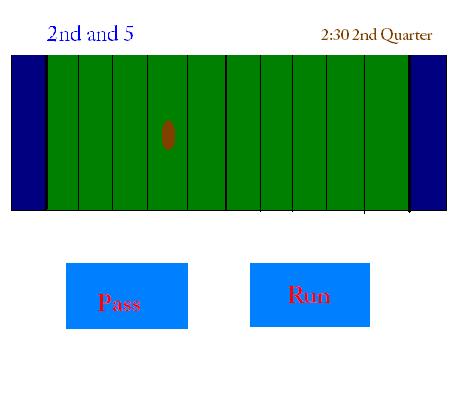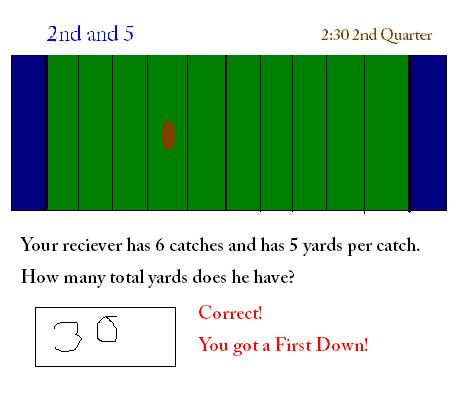ProjectProposal-JordanBerk
From CS 160 Fall 2008
Contents |
Target User Group
Kids around the United States love to watch and/or play football and other sports. Many of these same kids detest learning, practicing, and using math. The target user group is kids in and around the 5th grade who fit into this group of people who love sports but don't like or aren't good at math. The teachers and parents of these kids is an additional user group, since they will be the ones most likely to make the kids play the game. Also, using varying levels of difficulty, the scope could be expanded to include a much larger range of ages.
Problem Description
Being able to use mathematics, especially the fundamental elementary school operations such as addition, subtraction, multiplication, division, fractions, and decimals is absolutely vital in today's world. For that reason, gaining a strong foundation of mathematical ability early in life is important for operating in the professional, social, and everyday aspects of life.
Problem Context and Forces
The context is based on two separate yet inherently linked ideas:
1) Learning math does not generally have the reputation of being fun among young students. Many students, especially around the 5th grade when new concepts such as division, fractions, and decimals are generally introduced, resist learning the concepts. Whether they find the math frustrating, hard, or simply have trouble concentrating on it, these kids fall behind the rest of their class and need help to catch back up.
2) Kids like sports. Sports and simple math go hand-in-hand. Points are added, game time remaining is subtracted, percentages/averages are calculated based on fractions, etc. More advanced math and statistics are used to calculate things like passer rating in football, BCS ranking (in college football), and almost everything in baseball.
Solution Sketch
The game plays just like a game of football, complete with offense (pass plays, run plays, touchdowns, and field goals), and defense. However, to move to ball down the field on offense, or to prevent the ball from moving on defense, the player must successfully answer a math related question.
The questions themselves are related to football, with all of the basic elementary school mathematical operations addressed. For example, adding up yards acquired for addition, subtracting clock time for subtraction, the example in the picture below for multiplication, and yards per carry for division or fractions. The question base could also adjust based on the chosen difficultly setting to include percentages and decimal division, etc.
The rules are very much like football. The player has three chances (three downs) to get a new first down, by answering questions correctly. The number of yards gained corresponds to the difficulty of the question, and the difficulty of the question is based on whether the player has chosen a pass or a run play. On 4th down, the player either punts (if in their own half of the field), or kicks a field goal. Punts are always successful, but field goals depend on getting the math question right. The difficulty of the question is based on the distance from the goal posts (further away results in a harder question). On defense, getting a question right results in forcing the opponent to gain 0 yards, and thus lose a down. Otherwise, the opponent gains some number of yards depending on whether the opponent chose pass or run.


